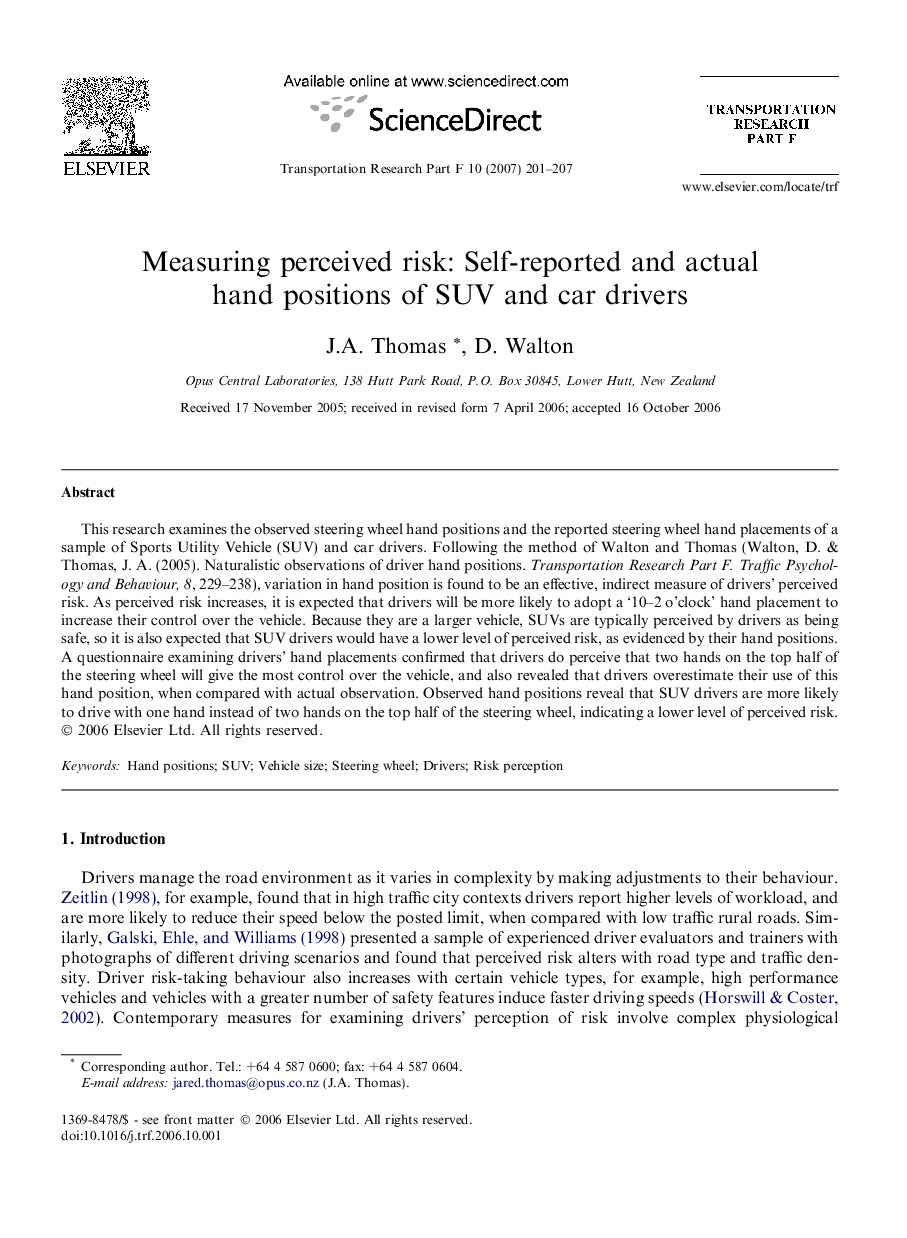| کد مقاله | کد نشریه | سال انتشار | مقاله انگلیسی | نسخه تمام متن |
|---|---|---|---|---|
| 898148 | 915241 | 2007 | 7 صفحه PDF | دانلود رایگان |

This research examines the observed steering wheel hand positions and the reported steering wheel hand placements of a sample of Sports Utility Vehicle (SUV) and car drivers. Following the method of Walton and Thomas (Walton, D. & Thomas, J. A. (2005). Naturalistic observations of driver hand positions. Transportation Research Part F. Traffic Psychology and Behaviour, 8, 229–238), variation in hand position is found to be an effective, indirect measure of drivers’ perceived risk. As perceived risk increases, it is expected that drivers will be more likely to adopt a ‘10–2 o’clock’ hand placement to increase their control over the vehicle. Because they are a larger vehicle, SUVs are typically perceived by drivers as being safe, so it is also expected that SUV drivers would have a lower level of perceived risk, as evidenced by their hand positions. A questionnaire examining drivers’ hand placements confirmed that drivers do perceive that two hands on the top half of the steering wheel will give the most control over the vehicle, and also revealed that drivers overestimate their use of this hand position, when compared with actual observation. Observed hand positions reveal that SUV drivers are more likely to drive with one hand instead of two hands on the top half of the steering wheel, indicating a lower level of perceived risk.
Journal: Transportation Research Part F: Traffic Psychology and Behaviour - Volume 10, Issue 3, May 2007, Pages 201–207